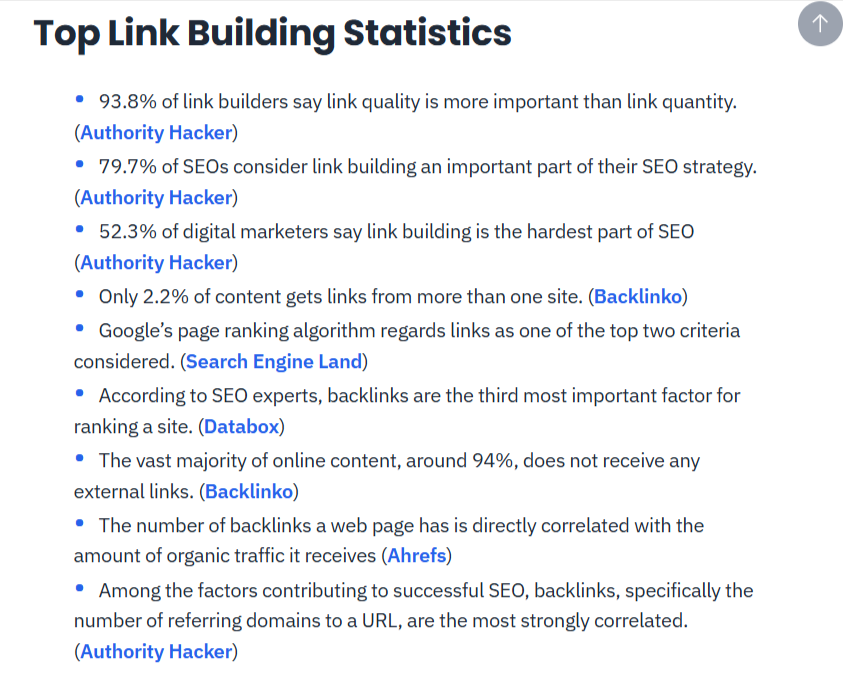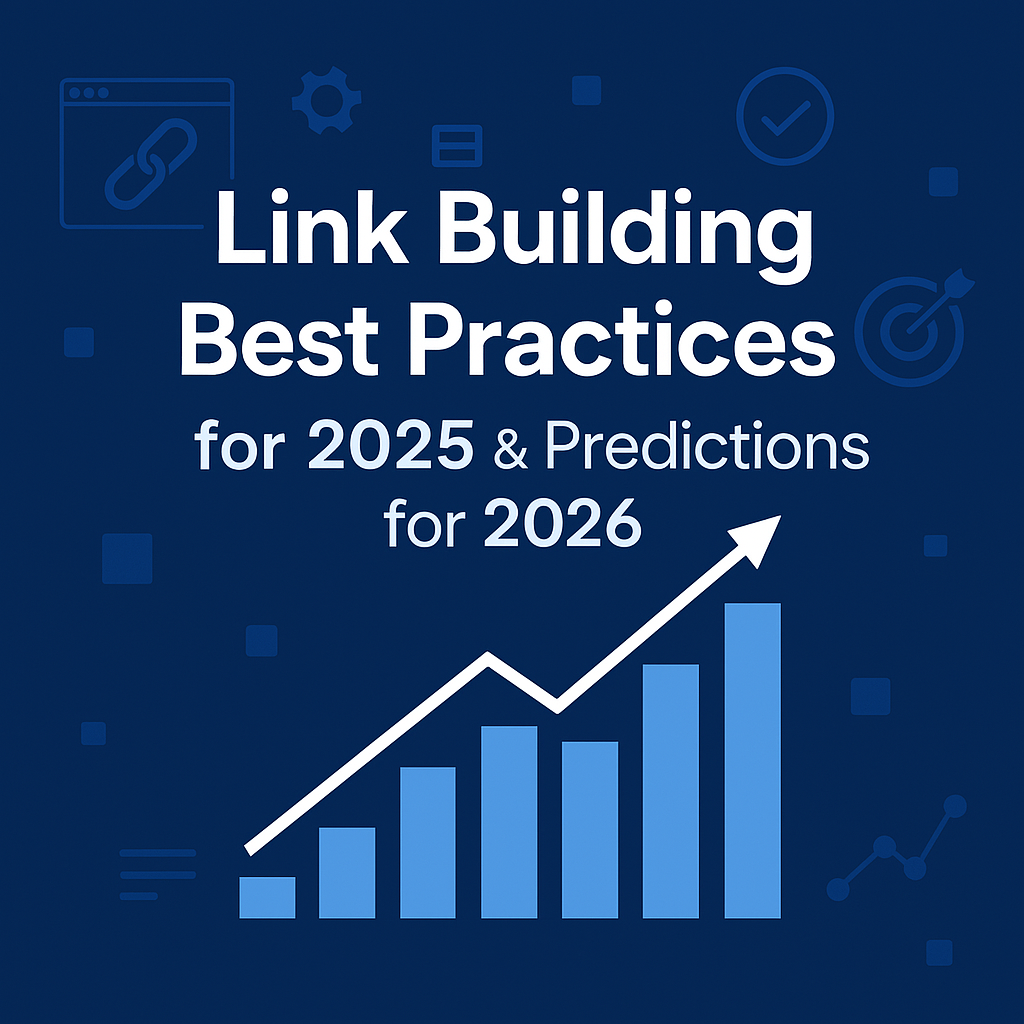SEO is harder than it used to be.
Google keeps updating its algorithm. AI is changing how content ranks. Many tactics from five years ago no longer work.
But one thing still matters: backlinks.
Good links improve your rankings. They bring traffic. They build trust. And Google still uses them as a core ranking factor.
But not all links help. Low-quality links can do nothing—or worse, hurt your site.
This guide shows you how to build safe, effective backlinks in 2025. It also shares what to expect in 2026, based on fresh industry data.
You’ll learn what’s working now. You’ll also see which tactics to stop using.
We studied real SEO campaigns. We checked the latest statistics from Ahrefs, Authority Hacker, Search Engine Journal, and other trusted sources.
You won’t find vague tips here. This guide is data-backed and practical.
Let’s start with what works right now.
1. Best Link Building Practices for 2025
SEO has shifted. Google’s AI is smarter. Link building now needs a smarter plan. Here are the top-performing strategies based on current data.
1.1 Focus on Quality, Not Quantity
Google wants links from real, trusted websites. One strong backlink is better than ten weak ones.

93.8% of SEO experts say link quality is more important than link volume.
Source: Authority Hacker 2025 Study
✔ Link from a DR 70+ blog? Valuable.
❌ Link from a no-name site with spun content? Ignored—or flagged.
What works:
- Target sites with real readers
- Check for original content, active social media, and real engagement
- Focus on niche-relevant sources
Pro Tip: Build links from pages that already rank well. These pass stronger authority.
1.2 Publish Content That Earns Links (Not Just Keywords)
Most people write for Google. That’s fine. But if nobody links to the page, it won’t rank.
Best strategy: Write content that others want to reference.
📊 Stat:
90% of marketers use content creation to earn backlinks.
Source: DemandSage SEO Trends 2025
What earns links in 2025:
- Industry data & statistics
- Case studies with results
- Step-by-step guides
- Expert roundups
- Visual assets like charts & graphs
Real Example:
A digital agency shared its SEO testing data from 100+ domains. That single article earned over 120 backlinks in three months.
1.3 Guest Posting Still Works (But Only When Done Right)
Guest posting is alive—but Google watches it closely. Mass-produced content and spammy anchors no longer work.
📊 Stat:
64.9% of link builders still use guest posting effectively.
Source: Authority Hacker
What works in 2025:
- Only pitch to real blogs in your niche
- Write custom, expert-level content
- Keep backlinks minimal and natural
- Use author bios for brand authority
Avoid:
- Guest post farms
- Sites with hundreds of low-quality guest posts
- Exact match anchor stuffing
Pro Tip: Build long-term partnerships with editors. Get invited back.
1.4 Use Digital PR for Natural High-DA Links
Digital PR blends SEO with journalism. You create newsworthy content, then pitch it to journalists.
📊 Stat:
Only 17.7% of link builders use digital PR—but it delivers top-tier links.
Source: Authority Hacker
What works:
- Industry reports (original data)
- Expert takes on breaking news
- Trend-based press releases
- Infographics or interactive tools
Real Example:
A cybersecurity startup published a report on AI-based threats. It got links from Forbes, ZDNet, and The Verge—all through digital PR.
1.5 HARO (Help a Reporter Out) Builds Trust and Authority
Journalists need expert quotes. You respond to their queries. If selected, your quote gets published—with a backlink.
High reward, low cost.
📊 Stat:
SEO agencies using HARO saw a 35% faster DA growth over 12 months.
Source: Search Engine Journal – March 2025
Tips for 2025 HARO success:
- Be fast. Respond within 30 minutes.
- Keep it short. 2–3 sentence answers work best.
- Share unique stats or personal results.
Common mistake:
Using AI to generate generic answers. Journalists delete those.
Pro Tip: Set Google Alerts for your brand to track unlinked HARO mentions too.
1.6 Diversify Anchor Text Naturally
Google looks at your anchor text patterns. Repeating the same keyword over and over can backfire.
Good anchor mix in 2025:
✔ Branded (e.g., A1 Link Building)
✔ URL-based (e.g., a1linkbuilding.com)
✔ Generic (e.g., click here, this article)
✔ Partial match (e.g., best link building service)
📊 Stat:
Sites with natural anchor text distribution had 40% lower risk of algorithmic penalties.
Source: Backlinko’s Anchor Text Report – Feb 2025
Pro Tip: Always check your anchor profile monthly with Ahrefs or Semrush.
1.7 Build Internal Links to Support External Links
Google tracks your internal link flow. If a page earns backlinks but has no internal support, value gets lost.
📊 Stat:
Internal links improve crawling and can increase keyword visibility by up to 30%.
Source: Search Engine Land – January 2025
What to do:
- Link from older blog posts to new ones
- Use clear, short anchor text
- Link to money pages from strong blog content
Pro Tip: Use tools like Link Whisper or SEOTesting to automate this.
1.8 Track Link Performance, Not Just Count
Many SEOs track how many backlinks they get. But what matters more is link impact.
📊 Stat:
Only 42% of marketers track how their links affect traffic or rankings.
Source: [Authority Hacker 2025]
Track metrics like:
- Organic keyword growth
- Referral traffic from linked pages
- Time on site from referral traffic
- Link source page health (indexed, no-follow, etc.)
Pro Tip: Build dashboards in Looker Studio for live backlink tracking.
1.9 AI Tools Help—but Don’t Replace Strategy
AI is changing link building. It saves time, but it doesn’t think like a human.
📊 Stat:
44.2% of SEOs now use AI tools in link outreach.
Source: DemandSage SEO Tech Report 2025
What AI can do well:
- Find broken link opportunities
- Create short outreach templates
- Track link velocity and toxic links
What you still need to do:
- Build relationships
- Write custom outreach
- Decide what content is worth linking to
Pro Tip: Don’t use AI to write entire guest posts. Editors will reject it.
2. Predictions for 2026
The link-building landscape will change again in 2026. Google’s algorithm keeps learning. SEO pros will need to adjust. Below are the most important trends to expect.
2.1 More Value on Relevance Over Authority
Google will care more about link relevance than raw domain strength.
Right now, many SEOs chase high DA links. But this doesn’t always help if the site isn’t related to your topic.
In 2026, relevance will matter more.
📊 Stat:
Google’s recent AI models now score topical connection between linking domains.
Source: Search Engine Journal, April 2025
Example:
A link from a DR 40 SEO blog helps an SEO agency more than a DR 85 gardening blog.
What to do:
✔ Build links only from niche-relevant pages
✔ Prioritize sites with similar topics and audiences
✔ Use semantic keywords in both the source and target pages
Pro Tip: Use tools like Surfer SEO or InLinks to match content context during outreach.
2.2 AI Will Take Over More Link-Building Tasks
More SEOs will use AI for outreach, prospecting, and link tracking.
📊 Stat:
47.3% of SEOs plan to use AI tools more in 2026.
Source: DemandSage AI SEO Trends Report
AI is already helping with:
- Prospecting websites at scale
- Finding broken links
- Sorting low-quality domains
- Scanning SERPs for linkable content gaps
- Drafting short, smart outreach emails
But AI will not replace:
- Manual relationship building
- Custom outreach strategies
- High-touch guest posting
- Media pitching to journalists
Pro Tip: Use AI to support, not replace, human work.
2.3 Multimedia Content Will Drive More Backlinks
In 2026, links will come from more than just blog posts.
Multimedia content—videos, podcasts, tools—will earn more links than static articles.
📊 Stat:
Google shows video and podcast snippets in over 30% of commercial searches.
Source: Backlinko Multimedia SEO Study, March 2025
What earns backlinks now:
- Industry podcasts
- YouTube tutorials with original data
- Tools or calculators embedded in posts
- Interactive visuals
Real Example:
A simple ROI calculator got 200+ backlinks in six months.
Why? Bloggers love linking to tools that help users.
Pro Tip: Turn high-performing blog posts into video summaries to earn embeds and links.
2.4 Google Will Push Harder on E-A-T
Google wants content from real experts. Not anonymous bloggers. Not AI spam.
In 2026, EEAT (Experience, Expertise, Authority, Trust) will matter more in how links are valued.
Backlinks from high-EEAT sites will carry more power.
📊 Stat:
Sites with clear author bios and credentials earned 54% more editorial links.
Source: Search Engine Land, February 2025
What to improve:
✔ Add author bios to all blog content
✔ Get featured on trusted sites in your field
✔ Build authority with expert interviews and podcast appearances
Pro Tip: List credentials and awards in your outreach emails to boost trust.
2.5 Voice Search Will Influence Link Strategy
More people will use voice commands to find answers.
This shift will affect how people phrase queries—and how links are earned.
Voice search uses natural language. That means longer queries, questions, and simple words.
📊 Stat:
58% of U.S. adults now use voice search weekly.
Source: Statista Voice Search Data, April 2025
How this affects link building:
- More links will go to pages written in a conversational tone
- “How-to” and “What is” content will earn more mentions
- Short, simple answers will get more citations
Real Example:
Pages with clear FAQs earn 35% more AI-generated citations in voice snippets.
Pro Tip: Structure blog content using questions and answers. Use schema markup to help Google understand it.
What’s Coming: The Future Is Smarter, Not Harder2026 won’t be about link volume. It will be about precision.
✔ Relevance > authority
✔ AI support > AI automation
✔ Value-driven content > filler blogs
✔ Media credibility > link exchanges
✔ Clear answers > keyword stuffing
SEO is moving from mechanics to meaning. And link building will follow that path.
3. Final Thoughts: What Works Now and What’s Next
Link building is still one of the most important parts of SEO. But the rules have changed.
What worked in 2015 doesn’t work today. And what works now may not work next year.
You need to focus on value, relevance, and relationships.
Here’s a quick recap of what matters most:
✅ Best Practices in 2025
- Get backlinks from trusted, niche-relevant websites
- Use guest posting, HARO, and digital PR
- Avoid low-quality link farms and AI-generated spam
- Create content people want to link to—like tools, data, and guides
- Mix up your anchor text naturally
- Track real results—not just link counts
🔮 What to Expect in 2026
- Google will value link relevance more than raw DA
- AI tools will support—but not replace—real link builders
- Video, podcasts, and tools will attract more natural backlinks
- E-A-T will keep growing in importance
- Voice search will push content toward simple, conversational formats
👥 The Role of Relationships in Link Building
Outreach matters. But not just cold emails.
Real results come from real relationships—with editors, bloggers, and journalists.
At A1 Link Building, we help clients build these connections. We earn backlinks from trusted sites through personalized, ethical strategies.
We don’t chase link quantity. We focus on links that actually help your business grow.
📞 Work With A1 Link Building
Want high-quality, white-hat backlinks that improve rankings and drive real traffic?
Whether you’re a brand, agency, or startup—we can help.
🔹 Manual outreach to real websites
🔹 Links from relevant, trusted sources
🔹 Clear reporting with real results
👉 Contact us today to start your custom link-building strategy.

